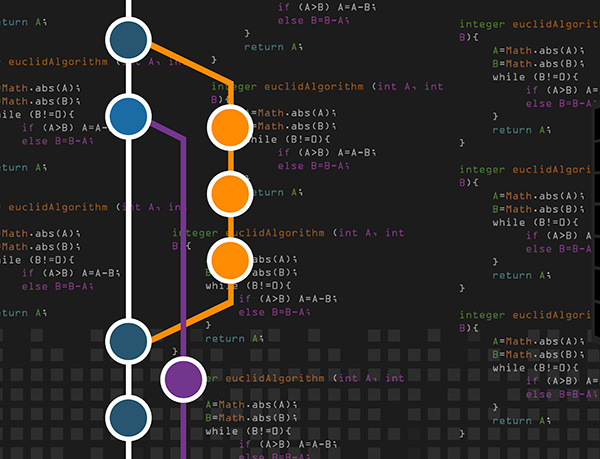This era of fast-paced tech-driven advancement has witnessed a rapid transition of digitization. This transition has given rise to the adaptation of Content Management Systems (CMS) to cater to the management of digital platforms and the sheer data they contain. Among them, Git-based CMS tools are on the top list as they let your content authors and developers work together seamlessly to deliver a high-value audience-centric experience.
According to Gartner, Git is the most popular distributed Version Control System (VCS). The main idea behind Git is to be able to track changes across a set of files. Developers use Git when they are working on files collaboratively. Git is often tied into other software to bring distributed workflow into the mix. And as you probably have guessed, it can be built into CMS as well.
This article will take you through the essential Git-based CMS tools. We will discuss the advantages some Git-based CMS tools have over their counterparts and what we believe to be the best tools out there.
What is a Git CMS?
Before getting into the details, it is essential to understand the premise of a CMS. At its most fundamental level, a CMS allows the content to be separated from the code of digital experience applications - websites, portals, mobile apps, e-commerce sites, OTT video experiences, and such.
As such, a CMS must provide a user-friendly interface for creating, publishing, and editing web content, and should provide robust support for developers building the software applications that deliver the content and overall end user experience. Ideally, a CMS allows collaboration between content creators and software developers. At a minimum, it should not introduce bottlenecks or friction into either teams’ processes.
A Git-based CMS is one that uses Git as its underlying repository for all content management, as well as code and configuration management. This provides a smoother workflow for collaborative content production, as we will see next in this article. A Git-based CMS can be contrasted with a database-oriented CMS, in which content is managed in a SQL (or NoSQL) database while code and configuration is maintained in a separate source code VCS (like Git).
Benefits of Git-based CMS
There are several key benefits Git-based CMS holds over a database-oriented CMS. The first and foremost is robustness. Git is an industry-standard tool used by almost all developers because of its strong versioning model, and its distributed architecture. All these capabilities can be applied to the management of content and configuration (and infrastructure as code artifacts as well for ops).
When implemented properly, a Git-based CMS can also facilitate seamless collaboration among developers, content teams, and ops teams -- allowing the benefits of DevContentOps processes to be realized.
5 Best Git-based CMS Tools
Below are the top 5 Git-based CMS tools, and each excels in specific areas. It is essential to understand these differences to choose the CMS most suited to your needs.
Netlify CMS
Netlify CMS is currently the most starred Git-based CMS on Github, and for good reasons. It is open-source, which means it benefits from a community of developers and easy adoption. The CMS itself is built as a single-page React app. However, it is limited to managing content for static sites.
One can add custom content previews and plugins for content editing. The user interface allows drag-and-drop media upload with rich-text editing. All in all, this is a complete static-site-focused CMS for anyone wanting to start with a quick setup and responsive community.
Github Pages
Many developers do not seriously consider this, but Github Pages is a fantastic solution to build quick and easy static websites. Pages support only Jekyll-based themes, so there is one limitation. Beyond that, the hosting is free and is well integrated with the Git repository. Anyone can set up an essential website with a single click. Pages are often the choice for developers to build an online presence with personal sites but are less suited for teams.
Crafter CMS
Crafter CMS is an enterprise-grade, open-source headless CMS that aims to support both static sites and dynamic, personalized, and multi-channel sites. The CMS repository is backed by Git and is designed to allow developer teams, content teams, and operations to connect their efforts to deliver content-rich digital experiences at scale using DevContentOps processes. This is a huge feature that Crafter provides over the other Git-based CMS mentioned in this list. The ability to support static as well as dynamic websites sets Crafter apart. We will see why this is important.
Prose
Prose is a rather simple open-source CMS, primarily providing a web interface for managing content on Github. It can be used with Github Pages as it supports Jekyll and markdown. The set-up of Prose is simple. Like most Jekyll-based sites, the config files are all that need to be updated to get it running.
Prose has tools for markdown editing with support for syntax highlighting and a formatting toolbar we have become accustomed to. The Live Preview is the cherry on the cake. This CMS is lighter in features, but this adds to the simplicity.
Forestry
Forestry is another Git-based CMS for static sites, with the notable caveat being that it is not open-source. Forestry is a fast and modern CMS with a modern interface. The pricing structure accounts for the fact that it manages the nitty-gritty of hosting for you. As a user, you will focus on your content and the style. Like most of the other Git-based CMS except for Crafter CMS, this tool also focuses on static sites. Finally, it is completely free to use for personal websites, which is a big plus.
Why Build a Website Using a Git-based CMS?
A Git-based CMS can provide robust and sophisticated content modeling and version control in a distributed manner for both code and content, allowing for highly productive collaboration among content creators and developers. When a user-friendly content authoring interface is provided on top of Git, like all the CMSs listed above do, it can provide an easy way for content teams to edit, manage, and publish content (without having to learn anything about Git).
We have seen the term static and dynamic crop up when describing sites. It is essential to understand the main differences between the two.
A static website serves the same content to all site visitors, every time. The site is usually rendered using tools such as Jekyll and Hugo. They are called static-site generators (SSG) for this reason. Static sites serve content very quickly and securely. However, they are limited to information-based areas. Where we need dynamic functionality such as personalization, recommendations, multi-language and internationalization support, site search and more, we turn to dynamic websites.
Dynamic websites render (some or all content) on the fly as each visitor hits the site, allowing for a richer experience to be delivered. Both client-side and server-side rendering technologies may be used by application developers.
Many enterprises have a mix of static and dynamic sites throughout their portfolio. Of the Git-based CMSs we have looked at here, only Crafter CMS supports both dynamic and static sites. There is a handy guide to building dynamic sites on Crafter here.
So to summarize, Git-based content management systems provide robust capabilities for modern digital experiences. In contrast to most traditional database-oriented CMSs, Git-based CMSs have the potential to fully realize the benefits of DevContentOps processes.
Each Git-based CMS is great in its own unique way, and we recommend checking all of them out to see what best meets your needs.

 Emad Bin Abid
Emad Bin Abid




